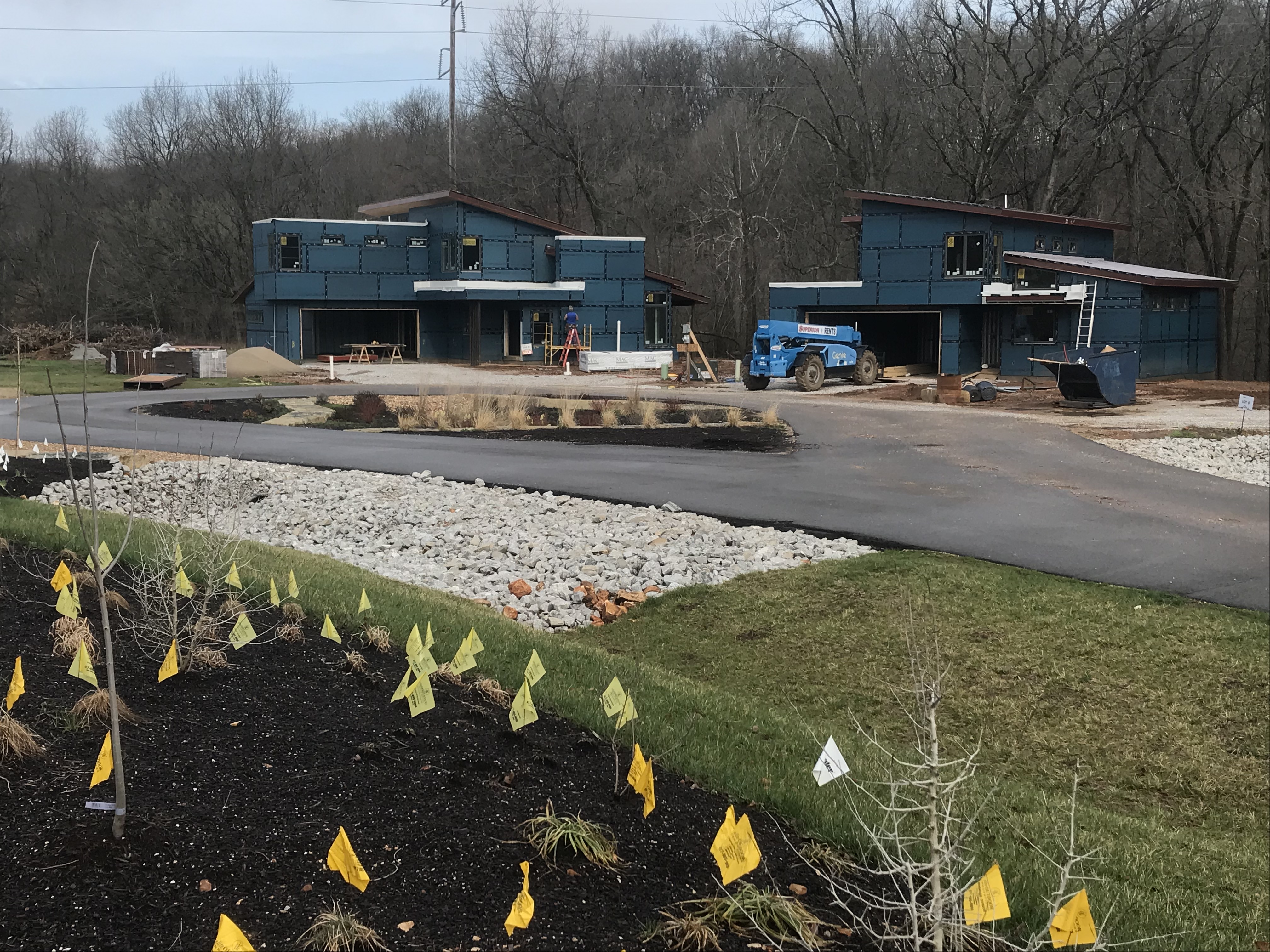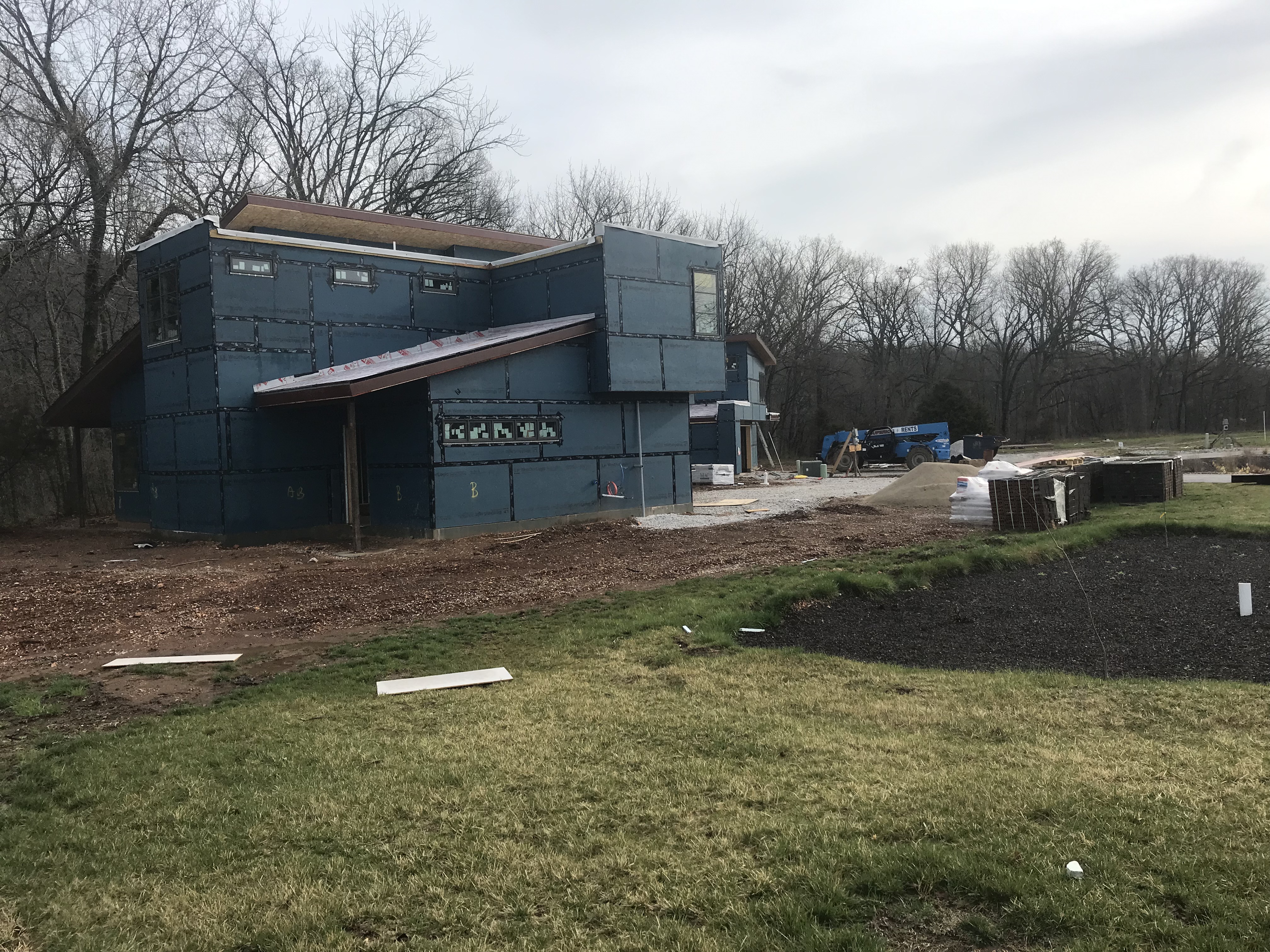Answer Man: What's being built near the Ashcroft Estates subdivision in north Greene County, near the entrance to the Ozark Greenways trail at South Dry Sac Creek? It's a big building and nice looking. — Randy Baker, of Springfield
I drove there Monday morning. It is a beautiful location just off the river with a wooded hill rising on the far side.
It's a 10-lot subdivision with three houses under construction. It's called Dry River Crossing.

The developer tells me he is committed to preserving the natural beauty of the location and building homes in tune with nature.
“Our whole goal is a reduced square-footage footprint on the ground,” says developer Clint Harlan. “We want a smaller footprint so we don't damage the earth. We can go up with it.”
In other words, instead of covering up green space that absorbs water, the homes will be two or three stories.
They will have cantilevers — beams supported at one end, with load carried over the overhang. Famed architect Frank Lloyd Wright often used cantilevers in his designs.
“We can put a flat roof on top of the garage so the top of the garage can be used for an intimate gathering space or maybe even a garden,” Harlan says.
Harlan founded Elite Irrigation Services in 1999 in Springfield. The business grew and expanded and became Elite Outdoor Innovations.
He and James J. Hetherington, an architect and builder who owns a design and consulting company, teamed to create Canopy Developments, LLC, which is building Dry River Crossing, the 10-lot subdivision on 8.3 acres.
A second phase will have 60 lots with a wider range of lot sizes nearby.

The developments will have parks and ample green space, Harlan says.
“We do not have to come in and decimate the ground to develop it,” he adds. “The common practice is to go in there and bastardize the land.”
Too often, he says, developers pour too much concrete and remove too many trees.
The Dry River Crossing development is zoned as a plot assignment district, which allows for greater creativity in design. (The land already was zoned for residential development.)
According to Greene County, rezoning to a PAD requires submission of more detailed information, including sketch plans and an engineering report.
For example, Harlan says, a typical subdivision would have had to have a sidewalk alongside the road that connects the 10 lots.
This development has a trail, not a sidewalk
Instead, he won approval to build a rolling, porous hiking-and-walking trail on the side of the street away from the houses. This new trail connects to the nearby Ozark Greenways trail.
Harlan tells me he and Hetherington also paid for a survey of plants on the land, and they think they found a species of violet rare in Missouri. They sent it to the Botanical Garden in St. Louis for confirmation.
Canopy has applied for the designation of a “green-certified” subdivision, meaning each home is designed and built to meet contemporary environmentally-friendly standards.

The company's website states:
“Our pledge is to develop the land in a way that protects, preserves and restores the area's beauty and natural resources for the enjoyment of current and future generations.
“We purposefully chose a property that was inevitably going to be developed and likely destroyed by conventional development practices. Canopy's master plan will be to build a community in and around the landscape without disturbing it.
“Some 60 percent of Canopy’s land will be forever retained in its natural state — we’ll accomplish this by actively restoring and preserving the river corridor, native plant species and wildlife habitat.
“We improve water quality with better stormwater management. We plant new native plants and trees and remove invasive species.”
I ask Harlan what the price range is to buy a lot and build a home at Dry River Crossing.
He says he cannot give a figure. The lots and house construction prices are rolled into one number.
He and Hetherington recommend steel framing and steel roofs, instead of wood. Steel costs more than wood but lasts longer, does not harbor termites and withstands tornadoes better.
Ultimately, he says, the final decision will be up to the buyer.
I asked how he and Hetherington met.
“I dig in the dirt for a living, my friend,” he tells me.
They met on a job site years ago, he says. He was digging and Hetherington was a carpenter.
“We've become good friends,” Harlan says. “We like to hike, fish, hunt and be outside. We go to the mountains together every three or four years.
“Nature is a big thing for us,” he adds. “That is what we really enjoy.”
This is Answer Man column No. 5.
